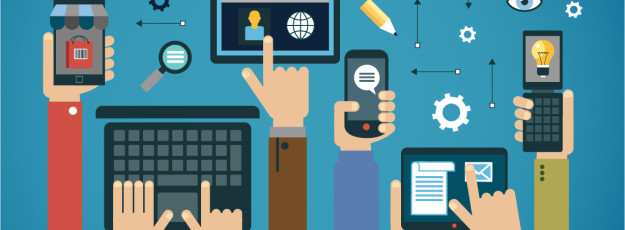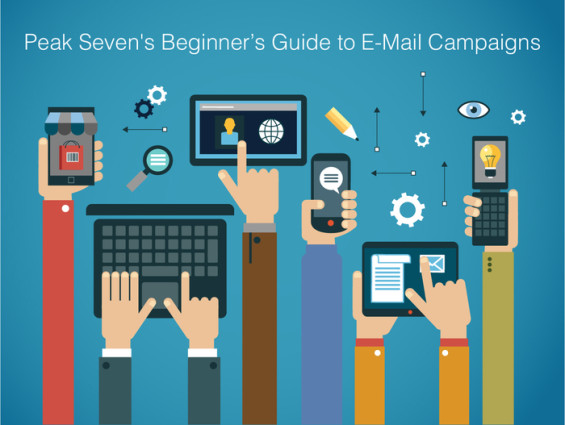
Peak Seven’s Beginner’s Guide to E-Mail Campaigns
Written By Darren Seys - July 25, 2014
We’ve heard that orange is the new black, 90’s fashion is back in style, and everybody’s juicing. These days it seems that everything we once knew to be true is being replaced by new and shiny trends. But does that mean social media is replacing email as the #1 direct marketing tool? According to CopyBlogger.com, no. We read their latest e-book “EMail Marketing” for further insight.
E-Mail vs. Social Media
The good news is that today email is still the #1 direct marketing tool. Even with the 1.13+ billion monthly users on Facebook, only 664 million of these people are logging onto Facebook on a daily basis – meaning that more than half of Facebook users are missing content and material in their newsfeed. The status update that you so cleverly crafted is buried after only a few moments under newer, more relevant information from other Facebook users, making it easy for you to miss your target audience.
Unlike Facebook, 9 out of 10 people check their email on a daily basis. That marketing eblast that you sent over the weekend to your consumer on vacation will still be there when they decide to check their email first thing Monday morning. But how can you ensure that people read your email?
Content is King
Providing your readers with valuable content is the MOST important aspect of email marketing campaigns. After all, why do you think they signed up for your newsletter? Don’t push your business onto the consumer. Don’t overload your emails with too much text or too much information. View your e-blasts or newsletters as a recipe for success for readers, and breakup said recipes into 7-10 steps. Each step should be valuable and be completed by itself so that readers can reach success through your campaign step-by-step.
Attention-Grabbing Subject Lines
You will need a good subject line to get your audience’s attention. Play around with different titles, and even push the envelope using words that can normally redirect your message to spam, as long as the content is truly valuable to readers (i.e. “Make Money Doing *Action Here*). The best subject lines are short and to the point and solicit a reader’s interest.
Segment and Engage Your Readers
Reader segmentation can ensure a successful email campaign. Not all readers should be treated equal. For example, if you have a lifestyle blog with an e-newsletter, some readers may only want to receive emails with content about restaurants and nightlife while others may prefer only fitness and health information. It is important to give your readers the option of what content they can receive, as well as the frequency.
Reader engagement is dependent on the time and day on which you send an email. Contrary to belief, there is no universal time or day of the week that is optimal. Depending on your audience and multiple rounds of trial and error, you can engage what time of day and what day of the week results in the most opens, click-throughs, and sales. Tracking these aspects, your emails will help you determine the optimal time for your audience.
Tone Selection
You will also need to set your tone. Find a happy medium between casual and informative, as readers respond best to a friendlier tone. You want your reader to feel as if they are a valued individual that is part of a community, not just another face in the herd. Encouraging social media interaction amongst the company and readers reinforces a sense of community, as does including customer testimonials.
Format for Mobile Devices
Formatting your emails to be friendly for mobile devices and tablets is crucial; this is “Responsive Design.” Nothing is more discouraging to the reader than opening an email, only to find a distorted text and images on their screen. While your reader may open the email, the click-throughs and conversions will not be nearly as high because they cannot engage with the content.
The Call to Action
Lastly, if you are seeking engagement from your readers, whether it is to download an e-book, buy merchandise, or to sign up for another email list, put your call to action button (CTA) at the bottom center of the email. This way, when the reader finishes with the newsletter, they can click and engage your CTA immediately.
Email is one of the most valuable assets a business has. Putting together an e-newsletter can seem daunting, but if you follow these simple guidelines, you are already setting yourself up for success. What are you waiting for? There are thousands of hungry readers waiting for your content!
comments powered by Disqus Share